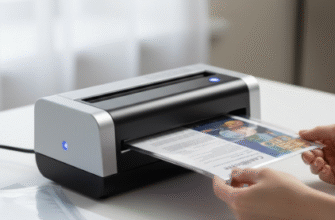It’s almost impossible to imagine navigating the sprawling aisles of a modern supermarket without one. That humble metal or plastic basket on wheels, the shopping cart, is such a fixture of the retail landscape that we barely give it a second thought. Yet, this ubiquitous tool has a fascinating history, born from frustration and clever observation, and its arrival fundamentally reshaped how we shop and how stores sell.
Before the Basket on Wheels
Cast your mind back to the early days of self-service grocery stores, a concept still relatively new in the first few decades of the 20th century. Shoppers, liberated from handing a list to a clerk behind a counter, now roamed the aisles themselves. But they faced a practical problem: how much could they actually carry? The standard was a small, handheld wire or wicker basket. Once it was full, or simply too heavy, the shopping trip was effectively over. Customers often limited their purchases to what they could comfortably manage in one go, perhaps making multiple smaller trips throughout the week. For store owners, this represented lost potential revenue. Bigger baskets helped a bit, but they quickly became unwieldy.
The Birth of an Idea: Sylvan Goldman’s Folding Chair Epiphany
The solution came not from a logistics expert or an engineer, but from a perceptive supermarket owner in Oklahoma City. Sylvan N. Goldman, proprietor of the Humpty Dumpty grocery chain, noticed his customers’ struggles firsthand. He saw them abandoning baskets mid-aisle, saw the strain on their faces, and understood the direct link between carrying capacity and sales volume. He knew there had to be a better way.
Inspiration struck, as the story goes, one evening in his office in 1936. He observed a woman place her heavy shopping basket onto a wooden folding chair, wishing she could just wheel it around. Goldman himself later described watching two folding chairs and imagining placing a basket on the seat of one and another underneath, then adding wheels. The core concept clicked: a mobile, larger-capacity carrier.
Working with a maintenance man, Orville Young, Goldman tinkered with the idea. Their first prototype, built in 1937, was essentially that: a metal frame resembling a folding chair, equipped with wheels and designed to hold two wire baskets, one above the other. It wasn’t sleek, perhaps, but it was functional. Goldman patented his “Folding Basket Carrier for Self-Service Stores” and founded the Folding Carrier Basket Company to manufacture his invention.
Goldman expected his invention to be an instant hit. He envisioned shoppers eagerly grabbing carts, filling them to the brim, and boosting his stores’ profits. The reality was quite different. His customers were… resistant. Surprisingly so.
Men, apparently, felt pushing a wheeled basket was unmanly, perhaps too reminiscent of pushing a lawnmower or, worse, doing “women’s work.” They preferred the perceived strength implied by carrying a heavy basket. Women, on the other hand, reportedly felt the contraption looked too much like a baby carriage or pram, and they balked at the idea of pushing one around the grocery store. Decades of carrying baskets had ingrained certain habits and perceptions, and this new device felt awkward and strange.
Sales flagged. Goldman’s revolutionary invention seemed destined to become a footnote, a warehouse full of unsold metal frames. But Goldman wasn’t just an inventor; he was a shrewd marketer.
Marketing the Cart: Ingenuity Wins the Day
Faced with customer apathy, Goldman devised clever strategies to normalize his creation. His masterstroke was hiring models – both male and female – to simply wander his stores pushing the carts and pretending to shop. These attractive, confident “shoppers” demonstrated the ease and convenience of the carts, subtly suggesting that using one was perfectly normal, even desirable.
He also employed store greeters positioned near the entrance. Their job was specifically to welcome customers and offer them a cart, explaining its benefits: “Look, everyone is using them – why not you?” This direct, friendly approach helped break down the initial hesitation. Slowly, cautiously, real customers began trying the carts. Once they experienced the freedom of not having to juggle a heavy basket, the convenience quickly won them over. The practicality was undeniable. You could simply buy *more*.
Sylvan N. Goldman patented his initial shopping cart design, the “Folding Basket Carrier for Self-Service Stores,” on April 12, 1940 (U.S. Patent No. 2,196,914), although he first introduced them in his stores in 1937. This invention aimed directly at solving the limited carrying capacity of shoppers in early self-service supermarkets. His subsequent marketing efforts were crucial in overcoming initial public resistance.
Refining the Design: Nesting and Beyond
Goldman’s original design, while groundbreaking, had a significant drawback: storage. The folding carts, even when collapsed, took up considerable space. The next major leap in shopping cart evolution addressed this very problem. In 1946, Orla E. Watson, an inventor from Kansas City, Missouri, developed and patented a design for a shopping cart with a hinged rear basket wall. This ingenious modification allowed the baskets to telescope, or “nest,” snugly inside one another.
This nesting capability was revolutionary. Suddenly, dozens of carts could be stored neatly in the same footprint previously occupied by just a few of Goldman’s folding models. It made carts far more practical for stores of all sizes and cemented their place in retail. Watson formed Telescope Carts, Inc. to manufacture his superior design.
Naturally, this led to legal wrangling. Goldman initially contested Watson’s patent, claiming infringement on his own earlier ideas. The legal battles continued for several years, but eventually, Goldman relinquished his patent rights in exchange for licensing rights related to the nesting feature, recognizing the superiority of Watson’s design. The nesting cart quickly became, and largely remains, the industry standard.
Materials, Features, and the Modern Cart
Since the advent of the nesting cart, the basic form has remained remarkably consistent, but materials and features have continued to evolve. Early carts were heavy, constructed primarily from steel wire and tubing. Over time, manufacturers experimented with lighter metals and more efficient construction techniques.
Key developments included:
- Child Seats: Perhaps one of the most significant additions was the integrated fold-out child seat, introduced in the late 1950s or early 1960s. This simple feature made shopping vastly easier for parents with young children, turning a potentially stressful trip into a more manageable one.
- Plastic Carts: The introduction of durable, molded plastic carts offered several advantages: they were lighter, quieter, less damaging to store fixtures and vehicles in the parking lot, and available in various colors for branding purposes.
- Size Variations: Recognizing different shopping needs, retailers introduced smaller “convenience” carts for quick trips and larger, deeper carts for warehouse club stores or major grocery hauls. Double-decker carts also appeared in some formats.
- Enhanced Features: Modern carts often sport features like cup holders, purse hooks, lists or scanner holders, and improved wheel designs for smoother navigation (though the perennial wobbly wheel remains a common frustration!).
The shopping cart did more than just make shopping easier; it fundamentally changed consumer behavior and store layout. With the ability to effortlessly transport large quantities of goods, shoppers were psychologically primed to buy more. The physical limitation was removed, opening the door to larger pack sizes, bulk purchases, and, crucially, impulse buys.
Retailers quickly capitalized on this. Store layouts evolved with wider aisles to accommodate cart traffic. Product placement became more strategic, with high-margin impulse items often positioned near checkout lanes or at aisle ends where cart-pushing shoppers were likely to see them. The very scale of supermarkets expanded, partly because the cart enabled customers to cover more ground and purchase more goods in a single visit. The weekly “big shop” became a possibility largely thanks to Goldman’s wheeled basket.
Wheeling into the Future: Smart Carts and Beyond
The evolution hasn’t stopped. We’re now seeing the emergence of “smart” shopping carts equipped with technology. Some feature built-in scanners, allowing shoppers to tally their purchases as they go. Others incorporate touchscreens displaying store maps, personalized offers, or running totals. Companies are experimenting with carts that can automatically detect items placed inside, potentially eliminating the checkout line altogether.
While adoption is still limited due to cost and complexity, these innovations hint at a future where the humble shopping cart becomes an integrated part of a digitally enhanced retail experience. There are challenges, of course – battery life, durability, connectivity, and customer privacy – but the drive to innovate continues.
Beyond the grocery store, the basic cart concept has been adapted for countless other retail environments, from home improvement giants and garden centers to bookstores and liquor stores. Even the digital world pays homage, with the ubiquitous “shopping cart” icon representing the virtual container for our online purchases.
From a simple observation about folding chairs to sophisticated digital interfaces, the shopping cart has wheeled its way through retail history. It solved a fundamental problem, overcame initial skepticism through clever marketing, and evolved in design to become an indispensable tool. It silently shaped our shopping habits, influenced store design, and continues to adapt, proving that even the most seemingly mundane objects can have a profound and lasting impact.








